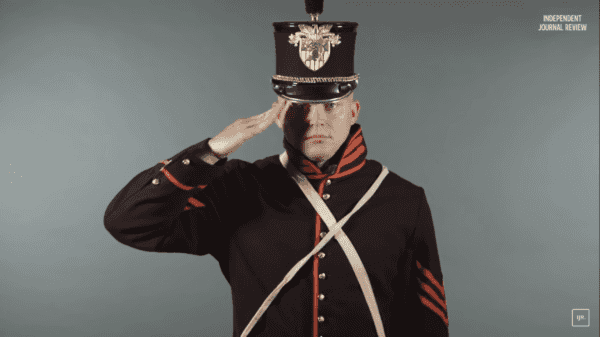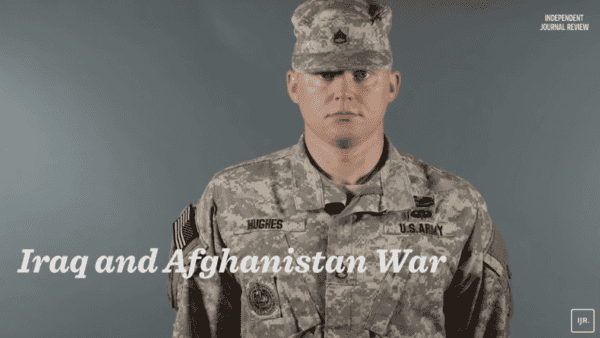In two minutes, this video provides a fast forward of more than 240 years of U.S. Army uniforms.
The timeline covers everything from the Revolutionary War up to present day. See how the standard issue uniform has evolved to meet the needs of modern-day soldiers protecting our country.
During the Revolutionary War, the Army wore the blue Continental uniform that was comparable to the British red coat.
In 1813 during the War of 1812, the U.S. Army began issuing blue coats and those were used until a shortage of blue wool forced a change to gray uniforms in around 1820.

War of 1812 uniform. (IJR – Independent Journal Review/YouTube)
In 1821, the Army changed out the “tombstone” cap and replaced it with the “bell crown” cap for company officers and enlisted soldiers.
An opening in the front of the cap displayed a feathered pompom, which would separate the branch of service. It was also 1821 when the Army introduced the use of epaulets and shoulder wings, which would signify a soldier’s rank or another aspect of their status.
In 1851, there were big changes in the Army uniforms that ultimately lasted for a long time. This was the introduction of the “frock” coat.
During the American Civil War, new hats were again introduced along with brass branch insignia.
During the Spanish-American war of 1898, soldiers were issued khaki uniforms for the field.
Soldiers in World War I wore olive-colored uniforms and spiral puttees around their legs.

WWI uniform. (IJR – Independent Journal Review/YouTube)
In World War II, soldiers wore olive uniforms again in combat with M1 helmets. There were a few new specialty items introduced, such as cold weather flying jackets for members of the Army Air Force, and coats made precisely for aerial troops.
In 1952 and during the Korean and Vietnam Wars, the Army implemented its olive-green utility uniform. Specialized units in the Vietnam War were issued the Army’s Engineer Research and Development Lab-made camouflage patterned uniform.
The Army implemented the woodland camouflage battle dress uniform in 1981, which remained in effect until the mid-2000s.
During Operation Desert Storm in 1991, and the post-9/11 battles in Afghanistan and Iraq, soldiers wore desert-colored versions of the woodland camouflage uniform.
After the Marines starting using a digital-style uniform, the Army came out with their Army Combat Uniform, which soldiers wore in Iraq and Afghanistan.

A progression of Army uniforms from war to war. (IJR – Independent Journal Review/YouTube)
Around 2009-2010 during Operation Enduring Freedom, soldiers deployed to Afghanistan wore the MultiCam uniforms.
The Operational Camouflage Pattern uniform started transitioning in 2015 but the process has been lengthy and some soldiers are still wearing the 2009-era MultiCam and the 2005-era Universal Camouflage Pattern.
The Universal Camouflage Pattern is expected to be retired branch-wide by Oct 1, 2019, according to an Army handout.



